What is facilitation? Definition and principles
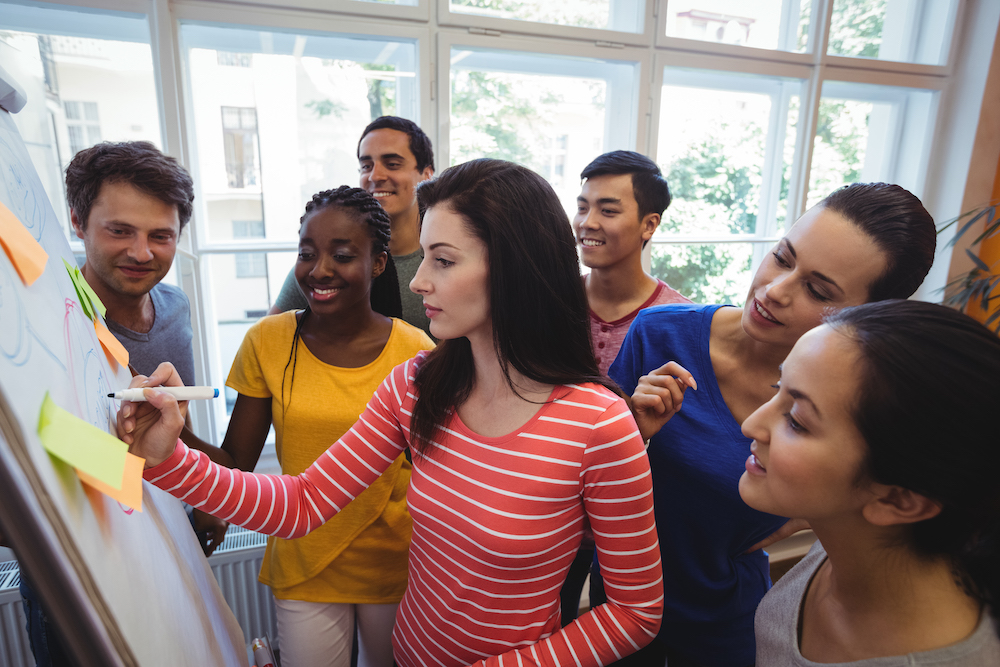
Facilitation is a powerful skillset that helps improve collaboration, generates results and improves group dynamics. But what does it truly mean to facilitate and approach situations like a skilled facilitator? How can managers, leaders and anyone running meetings and workshops learn to bring a facilitative approach to their work?
In this post, we'll share a definition of facilitation before exploring the key principles of facilitation you can use to embody the approach successfully, whether you're looking to have more effective meetings, handle conflict and do more productive group work.
Answering the question “what is facilitation?” is something most facilitators are called on to do on a regular basis. While there is a simple definition of facilitation, it sometimes fails to capture the essence of the skillset and what makes it a distinct and powerful tool.
In this post, we’ll define facilitation in simple terms while also giving you a better sense of the core principles that separate a facilitative approach from other ways of thinking. Think of these as the pillars around which you can build your facilitation practice.
While many of us know good facilitation when we see it, what’s going on behind the scenes can be complex and mysterious for those new to the practice. Here, we’ll demystify facilitation while also giving you some advice on how to bring a facilitative approach to your work.
What is facilitation?
Let’s start with a simple definition of facilitation: Facilitation is the craft of guiding a group through a participatory process that makes it easier to achieve their goals.
But let’s go further. What does facilitation mean, really? Facilitation is an approach, mindset and set of skills that a facilitator or leader employs in order to support a group during collaborative work.
Facilitation means creating space for everyone in the group to contribute and encouraging participation and ownership from everyone involved. It means having a shared goal and designing a process to help the group meet that goal.
Facilitation is also defined by its approach to process and content: a facilitative approach means designing a process which supports a group in discovering, ideating and creating their own content. It’s not about having one person get on stage and tell a group how to solve a problem: it’s about supporting group members to discuss that problem together and co-create a solution.
Facilitation processes are participatory and interactive by definition. A workshop is one of the most common examples of a process where facilitation is used, though an effective facilitator can bring their skills to the table any time a group comes together to get things done.
Designing a meeting process, holding community discussions, mediating conflict, working as a leader… there’s no shortage of scenarios where facilitation is a vital and transformative skill.
Want to learn more? Understanding what a professional facilitator is and what they do is a great next step for understanding what makes facilitation unique.
We also touched on the fact that facilitation is a set of skills and competencies that everyone – not just facilitators – can use to create shared understanding, supercharge group work and enable teams to do incredible things.
See this list of facilitation skills and how to improve them to start bringing this skillset to life in your work.

What are the principles of facilitation?
So we know that a facilitative approach is a means of creating participatory processes that make it easier for groups achieve their desired outcomes. But what does facilitation look like in practice? How should one go about using facilitation at work and what principles should you follow when trying to be a good facilitator?
While many facilitators have slightly different styles and ideas about exactly how to facilitate and engage group members, there are some unifying principles that underline the profession and useful methods of embodying the right mindset and improving your facilitator skills.
Some of the key principles of facilitation are:
Neutrality and impartiality
Neutrality in facilitation is all about enabling group members to have discussions and explore possible solutions while not providing the answers or becoming invested in a particular option yourself. A facilitator is not present to prescribe a solution or favour certain voices or ideas.
Holding this neutral, impartial position also means creating space for all voices to be heard and given equal weight and consideration. Think about how some people dominate during small meetings and certain viewpoints are favoured because they are held by managers. A facilitator designs their sessions to manage group dynamics and set ground rules that can hopefully avoid this possibility.
Effective facilitation also means helping the group be more objective and neutral during a discussion or while attempting to reach consensus. This is difficult, but with the right tools and techniques, having these kinds of conversations is made much easier!
There are some exceptions to this rule, especially when it comes to internal facilitation, where a manager may be facilitating a workshop with their team. It’s always helpful to approach discussions with an impartial, listener’s mindset, but when you’re also the decision maker, it’s impossible to be completely neutral.
In these cases, be sure to acknowledge this and make it known to the group. This isn’t a blocker to effective facilitation – just one more aspect to manage and be aware of!
Have a plan but be prepared to change it
Facilitated processes are carefully crafted experiences designed to guide a group through a flow of activities that helps them achieve a specific goal.
Workshop plans, for example, often include icebreakers to introduce the session, activities to help a group generate ideas and stay focused, and then techniques to create shared understanding, and converge on a solution. Designing and planning a workshop agenda is a skill in itself, and it absolutely one you’ll want to cultivate on your path to being a skilled facilitator.
All that said, one of the key things I’ve learned as a facilitator is that plans are also made to be changed or even broken. I’ve run many in person workshops where I realized the needs of the group had changed and so had to mix up my agenda. On one occasion with a virtual group, another more important discussion came up and we collectively decided that this new topic was a better use of our time.
Planning is important, but using your facilitation skills to identify when things need to change in order to help the group achieve their goals is a hallmark of good facilitation. But how do you know when you should make such a change? One of the best ways is to simply ask the group! Many managers may find this difficult, but remember that facilitation is participatory by nature.
Finding that sweet spot between preparation and flexibility takes practice, but it’s an important job that you can prepare for by following the other principles of facilitation featured in this section.
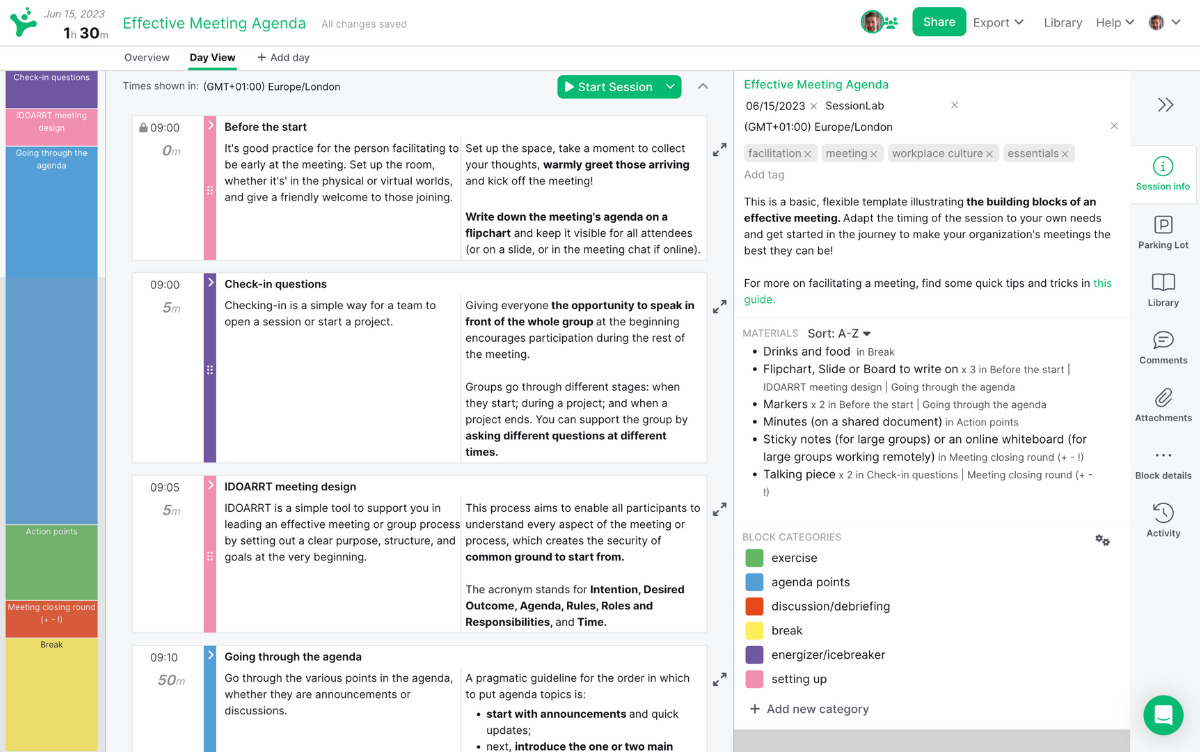
Know your goal
Having a very clearly defined goal before you begin a session is essential for all facilitators. Ask key questions about what outcomes need to be achieved with stakeholders and your team before the session. This allows you to build an effective workshop plan that delivers the desired outcome in an effective and engaging way. It also means you know where your agenda can bend and flex during delivery.
If things begin to go off the rails or a change feels necessary at any stage, check back against your goal and consider how you might best achieve your chosen outcome. I often find that changing the meeting agenda during a session is less about tearing up the entire agenda but rather, adjusting to what is happening in the moment and being flexible to the needs of the group while still pursuing our goal.
In practice, this often means extending the length of an important discussion and scrapping another activity because that is what will help the group achieve the outcome they need. Sometimes it means limiting the scope of a problem solving session because we need to spend more time on root cause analysis in order to truly understand an issue.
Remember that success is defined by whether your group achieved the goal of the session, not by whether you stuck rigidly to your original agenda.
Everything is in service of the group
Facilitation is all about guidance, rather than prescription. Facilitators create a structure that encourages the group to participate in the process to such an extent that they create solutions collaboratively. The facilitator’s job then, is simply to help the group do their best work together!
Remember that distinction between process and content? This is a key aspect of embodying this group service mindset. You are responsible for the process—the design of the meeting, the flow of activities—that will help the group achieve their goals, but you are not responsible for the actual content. Content should come from the group.
When it comes to content and solutions, the facilitator stays on the sidelines and helps guide participants to find their own outcomes. Facilitators give the group the tools and guidance they need to succeed and everything they do in both design and facilitation is about supporting the group.
Early in the process that will lead to an event or workshop, this means designing a process with your specific workshop participants in mind. In practice, this includes basic tasks such as considering room setup and when to take breaks.
Once you are actually in the room (virtual or otherwise) with participants, this focus on being in service to the group translates into paying closing attention to group dynamics and how people are feeling.
It’s also about being aware of body language and realizing that the group is in need of an energizer. It’s letting go of your favorite activity because you realize participants would find something else more effective. It’s giving adequate time for everyone in the room to have their voice heard.
A facilitator knows that the outcome of a workshop process is the sum effect of how a group communicates, collaborates and connects. Get this right and participants can do incredible things. Get this wrong and the group can become fractured or unproductive.
Facilitators act on behalf of a group and not themselves, knowing that what’s best for the group transcends the idea of what the meeting should look like on paper.
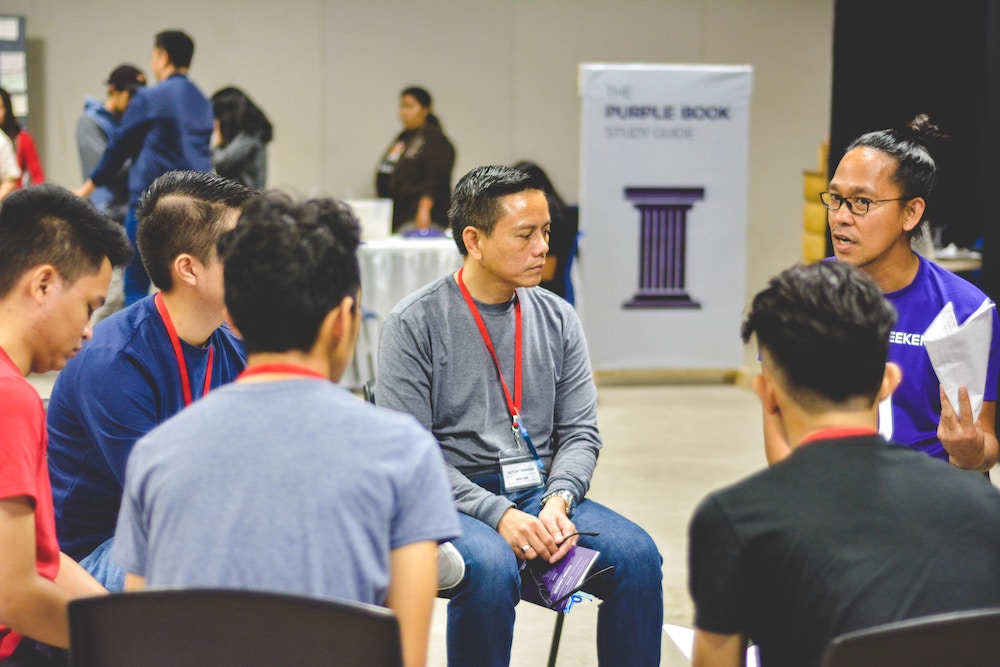
Frission is where things happen
Lively discussions, differences of opinion and new ideas are common occurrences in a well-facilitated workshop. Helping groups explore tricky problem spaces collaboratively can be emotionally charged, but it’s the facilitator’s job to guide a group through this process while maintaining psychological safety and mutual respect.
One important aspect of facilitation is learning to be comfortable standing in this storm and to not be afraid of conflict or passionate discussion. This is often where the magic happens and real change can occur.
Creating a space where difference and creativity can emerge is vital for creating true innovation, solving tough problems and really connecting as a group. This often means creating space for people to be vulnerable, asking key questions and opening things up, rather than closing them down.
Use facilitation techniques designed to support the process and carefully develop your facilitation skills in order to learn how to hold this space. This takes practice, great communication skills and a knowledge of group dynamics, but it can also be one of the most rewarding things about facilitation!
Participation and inclusivity
One of the most impactful mental shifts you can make as a facilitator is to put participation first. Moving from “I do this” to “we do this together” is one of the best ways to start putting facilitation into action, whether you’re working with students, employees or peers.
Facilitators design sessions and activities that encourage every member of a group to participate and feel good while doing so. This can be as simple as using a method such as 1-2-4 All to give everyone chance to contribute or as far ranging as creating a culture of idea generation and group decision making.
Facilitators also consider how to make spaces, discussions and settings inclusive: encouraging diversity in voices, ideas and teams. Good facilitators think about how to get the right people in the room, and how they might include important voices in the conversation.
Inclusivity can also look like setting ground rules at the beginning of a session to create safety, address power dynamics and move forward with an agreement of how people should treat one another in the space.
Facilitators often encourage everyone to participate and practice active listening and, depending on the cultural setting, eye contact while talking. They might also invite the group to agree upon working from a place of trust and respect the views of other participants, even if they disagree. All of these things might seem small, but when put together, they set the foundation for a productive and inclusive session.
With established groups, this should become second nature, but when starting out with facilitation, it can be helpful to make these things explicit.
I’ve found this principle one of the most impactful in my personal practice, particularly when it comes to using a facilitative mindset outside of meetings and workshops.
Aiming to include others as much as possible and think about how to enable participation can have far reaching effects on how we work together as people and collaborate. When facilitators give impassioned speeches about how facilitation can make the world a better place, this is what we’re talking about!
What are the benefits of facilitation?
The value of facilitation ranges from immediate to long term. Not only can a facilitative approach help improve a specific session, but it can also help bring about positive culture change and improve how an organization works together.
I often think back to attending meetings and workshops early in my career where I would come out feeling drained, unproductive or just plain bad. Sometimes, those sessions would feel like a waste of time or had actually managed to create conflict between me and other participants.
Facilitation means turning all that around and using meetings to their highest potential. Every collaboration is a chance to strengthen connections, do meaningful, engaging work and feel heard and valued as part of a team. When you leave a workshop feeling good about yourself and what you do, that can be incredibly transformative. That’s the power of facilitation.
Here are some of the key benefits of facilitation:
More effective sessions
Workshops and meetings run with a facilitative approach are often more effective and engaging than those run without. If you’ve been the victim of a meeting that goes over time or feels unproductive, you’ve felt the sting of poor or nonexistent facilitation!
Bring facilitation skills to your meetings and workshops and you’ll stay on time, make efficient progress and involve every person in the room in a more productive manner.
Over time, you’ll also find that your team’s ability to get things done efficiently, focus and stay on topic improves. Facilitation is habit building. When you and your team build good habits around your meetings and workshop, great things happen.
Get results
Remember how knowing your goal was one of the key principles of facilitation? By being outcome oriented, facilitation helps teams deliver results and do meaningful work. In practice, facilitators help groups focus on what is important and reach the goal of a session efficiently and on-time.
Facilitation is also proven method of getting groups to take ownership and accountability of the work they do. When a group co-creates their outcomes, buy-in is higher and the desire of the group to follow through is increased.
When you need to solve a complex problem, facilitate a team workshop designed to explore that problem and move forward together. With a facilitator on board, I promise you the results will be better than trying to solve the issue on your own. Facilitation is all about using specific tools and resources in order to create an environment where stuff gets done!
Creative thinking and innovation
Facilitation is all about unleashing the creative potential of a group. Sometimes this means running sessions explicitly designed to support ideation and innovation or using brainstorming techniques to generate creative ideas.
Beyond this, facilitation’s general ethos helps support a group to think creatively. Encouraging participation from all participants, putting in place good conditions for a psychologically safe environment, and giving space to think about things from a fresh perspective are all ways in which a facilitator can encourage innovation.
Improved group dynamics and connections
Paying attention to how people interact and taking steps to remove friction, build connections and help members get to know each other better are all things a facilitator does in service of the team.
This ability to enable members of an organization to form better connections through careful design, team building activities and facilitated discussions has long lasting effects on how teams interrelate and communicate.
Spending time deepening connections in a team building workshop and seeing your colleagues as much more than the job they do or simply learning better ways to help other people feel seen and heard in a meeting can be transformative. In my experience, teams that regularly facilitate sessions or use facilitation in their work are also happier and more connected.
Improved collaboration
Helping a team work together more effectively is one of the guiding stars of facilitation. By design, workshops are collaborative spaces where teams are encouraged to work together towards a common goal.
What’s wonderful about facilitation is that the techniques, connections and working patterns you establish in such sessions also translate to future collaborations.
Whether it’s learning to focus on one problem at a time, better explore ideas in depth or have more productive, effective discussions, the skills we learn in facilitated sessions have lasting effects on how we collaborate with others.
These changes can be dramatic, such as better organization and ideation when working on complex projects. They can also be small, with team members adjusting how they communicate with others on Slack or over email. All these things add up to a more collaborative working environment in which people often feel more empowered to do great things.
When to use a facilitative approach?
Approaching a situation with a facilitation mindset can be transformative and impactful, even if you’re not squarely occupying the role of facilitator.
As a manager or consultant, you may be more directly involved in the content of a session and making things happen than during traditional facilitation. Even then, following facilitation principles such as encouraging participation or having a clear plan and goal leads to better outcomes and more engaged teams.
Read on for some examples of specific sessions and scenarios where you might use facilitation for impact.
Meetings
A meeting can be a great place to start practicing your facilitation skills. Making some small changes such as time-boxing discussions, using check-ins or other facilitation techniques can have an immediately positive impact on the outcomes. Less unproductive discussions and more lightbulb moments while also finishing on time? Yes, please!
As a small, manageable microcosm of team dynamics, a meeting is also an ideal place for newbies to practice and apply knowledge of facilitation. If you’re just getting started, try bringing some of the facilitation principles to your next workplace meeting and set what happens.
With a facilitative approach, you can begin to positively change your meeting culture, start finishing on time and having clear action points. Read more in this post on how to facilitate a meeting!
Workshops
Workshops are a facilitator’s bread and butter. They’re a place where groups come together to collaboratively ideate, discuss, problem solve and hopefully reach consensus on an incredible solution everyone is excited to achieve. Bringing a facilitation mindset or better yet, a professional facilitator, and your workshops can become more memorable, effective and productive too!
Trying to plan and run a workshop without a working knowledge of facilitation can end up being unproductive or even chaotic.
If you’ve been at a workshop where the goal is unclear, activities seem picked at random or you don’t feel your contribution is valued, that’s a sign that the person leading the session needed to brush up on their facilitation skills or simply hire an external facilitator.
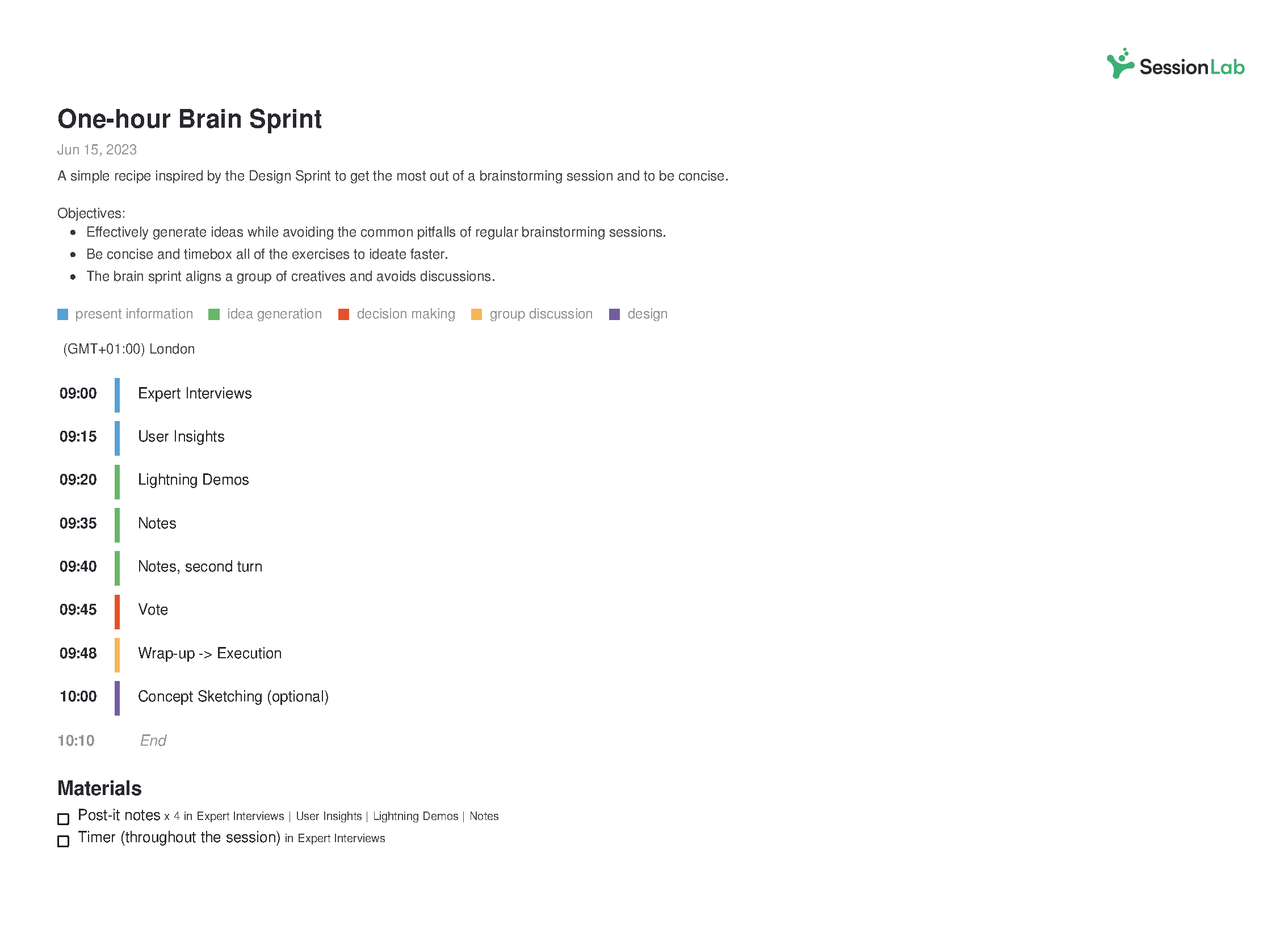
Leadership
Leaders who use facilitation skills as part of how they run their team are often more effective managers. Whether it’s making every meeting productive or knowing how to handle conflict and empower your group, facilitation is a skill every leader should be developing.
Leadership activities that have a facilitation element are becoming increasingly common parts of leadership training. As a leader, it’s likely that you already use some facilitation skills and tools every day. By becoming more aware of the practice and deploying these techniques thoughtfully, you’ll help build the foundation for high performing teams.
Consulting and coaching
Coaches and consultants share a lot of DNA with facilitators. All these individuals work in the service of a group or an individual and hope to help them solve problems, often empowering people to make changes themselves.
While consultants and coaches often have a more direct role in suggesting solutions, many principles of facilitation also form the basis of good coaching. Enabling a group or individual to act in their own interest while feeling seen, heard and valued are ideas that unite these professions.
Bringing facilitation methods into a meeting with a client or inviting stakeholders into a discovery workshop are just some of the ways in which facilitation can help you be a more effective consultant.
Training
While training courses and sessions are much more prescriptive in nature, facilitation skills and tools can still be used to impactful effect. Training is often more effective when it includes experiential elements and has opportunities for trainees to talk and learn from each other.
Complex training also requires a great deal of organization and process design. Our 7-day train the trainer template is a great testament to this! The overlap between trainer skills and facilitator skills is large and you’ll often find professional facilitators called on to lead training and improve participation and engagement from trainees.
Education
Whether it’s teaching students in school or working with adult learners, facilitation is a helpful skillset for lecturers and educators. Workshops, group-lead discussions and collaborative work are all formats a skilled teacher will employ when engaging students, and they all benefit from using a facilitative approach.
See our post on exploring the concept of teacher as a facilitator for more insights and tips on bringing facilitation into the classroom. Traditional seminars and lessons likely won’t go away, but there’s plenty of benefits to bringing facilitation into your teaching practice.
Whenever you collaborate!
In essence, all of the items listed above are formats for group collaboration. Whether it’s a compact team of three or four or a workshop with dozens of people, the format exists in order to help people get things done as a collective.
Facilitation can be used whenever you collaborate with others. Sometimes this is in a specific format, such as running a kickoff workshop at work. Other times, its an ad-hoc process of enabling better collaboration by simply thinking like a facilitator.
You might facilitate a meeting in the day and then moderate a conversation between your disputing neighbours in the evening! I’ve even heard of facilitators using dot voting to decide on what to have for dinner or idea generation methods to help their family choose where to go on holiday.
However you choose to employ facilitation, remember that the methods, tools and approaches are designed to help people collaborate more effectively, and in a way that makes them feel heard and valued. There are few limits to what effective facilitation can achieve with the right people in the room. Try using these principles in your interactions inside and outside of traditional formats and you’ll see what I mean!
In conclusion
Depending on who you ask, what is facilitation is a question that can have various answers. But what unites those interpretations is an emphasis on enabling a group to do great things.
Whether that’s through incredible workshop design or skilled group moderation, facilitators use their skillset to empower collaboration and create change. We hope that with this article, you can start to do the same!
Want to keep learning about facilitation? Join our free email course facilitation is for everyone to get started. Or join our community of facilitators to learn from your peers, see events and opportunities, and connect with some of the best minds in facilitation!
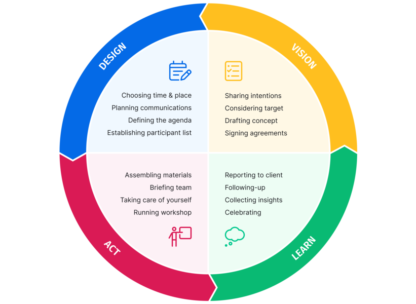
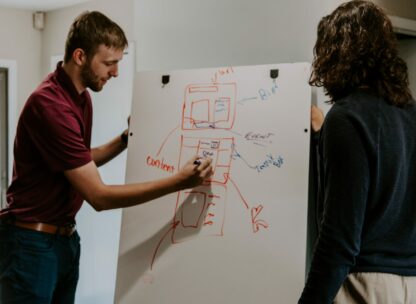

Leave a Comment